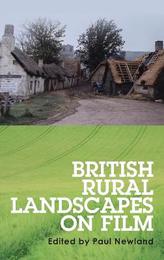
|
British Rural Landscapes on Film
Hardback
Main Details
| Title |
British Rural Landscapes on Film
|
| Authors and Contributors |
Edited by Paul Newland
|
| Physical Properties |
| Format:Hardback | | Pages:224 | | Dimensions(mm): Height 234,Width 156 |
|
| Category/Genre | Film theory and criticism |
|---|
| ISBN/Barcode |
9780719091575
|
| Classifications | Dewey:791.43621734 |
|---|
| Audience | | Undergraduate | | Postgraduate, Research & Scholarly | |
|---|
| Illustrations |
12 black & white illustrations
|
|
Publishing Details |
| Publisher |
Manchester University Press
|
| Imprint |
Manchester University Press
|
| Publication Date |
5 August 2016 |
| Publication Country |
United Kingdom
|
Description
This volume offers insights into how rural areas of Britain have been represented on film, from the silent era through both world wars and on into the twenty-first century. It is the first book to deal exclusively with representations of the British countryside on film. The contributors demonstrate that the countryside has provided Britain and its constituent nations and regions with a dense range of spaces in which cultural identities have been and continue to be worked through. Overall, the book demonstrates that British cinema provides numerous examples of how national identity and the identity of the countryside have been constructed through filmic representation, and how British rural films can help us to understand the relationship between the cultural identities of specific areas of Britain and the landscapes they inhabit. -- .
Author Biography
Paul Newland is REF Manager at Bath Spa University -- .
Reviews'This is a useful work ... Newland's Introduction valuably locates the debates about landscape in film within a social and cultural context. He gives an interesting account of the contributions of art history and cultural geography to the issue in hand, and makes a large (and in my view justifiable) claim that cinema has a privileged role in prefiguring social expectations of rural space. Essentially, film mines the available fields of topography and iconography and recycles them in a palatable form. To be sure, this edited volume, like all of its kind, has some internal contradictions because of the plural authorship. But what is gained is variety and richness of texture ... overall, this is a very stimulating book and one which rewards re-reading.' Sue Harper, The Journal of British Cinema and Television. 'This fine collection of essays and interviews investigates the modes and significance of British rural landscape on screen within the history of British national cinema. It sets out to challenge heritage cinema's representational paradigm of treating landscape as mere spectacle, and focuses instead on films in which the notion of the rural incorporates the depiction of the interconnectedness of land and its inhabitants [...] The book may serve as an excellent introduction to the topic for students, as well as a source of new ideas and some refreshingly new perspectives for the initiated expert.' Erzsebet Strobl, Film & History: An Interdisciplinary Journal, Vol. 48, No. 2 (Winter 2018) -- .
|